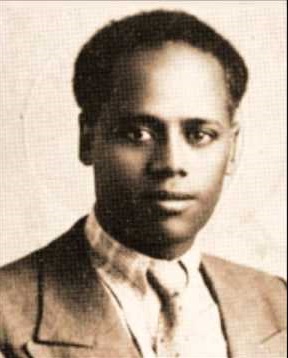
The history of telling tales, whether real or imagined, in Ethiopia goes back to a long time although the modern short story is a 20th century phenomenon. The short story did not always exist as we know it now but assumed different forms of expression depending on the times and social conditions. Even in Europe, “the short story is one of the oldest types of literature and had existed in the form of legends, mythic tales, fairy tales, tall tales, fables and anecdotes, in various ancient communities around the world. The modern short story developed in the early 19th century.”
If we look at the process of development of the short story in Ethiopia, we can safely say that it followed the above-indicated pattern, that is to say it first emerged in the form of tales (Teret Teret in Amharic), including the chronicles of kings and saints and angels as well as fictitious or real stories of people who had existed or did not exist at all. They are either the products of imagination or chronicles of real life events.
However, these early narratives were oral ones and some of them had been published later on while most of them have vanished as “collective memories” of the people who told them. According to available information, “short stories date back to oral storytelling traditions as which originally produced epics such as Homer’s Iliad and Odyssey.” The western tradition or art of storytelling started earlier in human cultural development and enjoyed opportunities to grow and spread throughout the world. Epics like Homer’s Iliad and odyssey are appreciated and enjoyed by many societies because they appeal to all human beings anywhere in the world.
In Ethiopia the Amharic term Teret (tale) was as old as society itself as it was coined to express a tale usually told to children in the evening while they gather around the fire before they went to bed. This was the traditional version of the modern bedtime story that is read to children by their parents. The difference between the traditional Ethiopian tales and modern ones is that the former were orally narrated while the latter are written and read from children’s books of stories. In both cases however, there is a common denominator that links them and this is the fact that the stories are imagined and often fantastic and that was what made them appealing as literature in a different genre. The Teret, is still popular in Ethiopia whether in its traditional or modern form.
However, telling Teret or tales could not develop as it should, because it was neglected for a long time after modern education was introduced and with it Western literature was introduced in the educational system. Foreign stories were translated into Amharic and published while the traditional tale could not develop at the same pace.
Modern publishing in Ethiopia was introduced very late with the introduction of the printing and helped books to be published. Some of the traditional tales were also published although many of them had disappeared without leaving a trace because they survived in the form of oral tradition and little written records were left behind. The most important Ethiopian fiction writer, Dr. Haddis Alemayehu had written a book of tales entitled “Teret Teret Yemeseret”, thereby proving that the traditional tale had a potential for development into a modern short story writing in the subsequent decades.
The process of evolving from oral tale to modern short story was not unique to Ethiopia. African literature has started by taking the same pattern of evolution from oral to written short tales. According to Wikipedia, “African literature is literature from Africa, either oral or written in Africa and Afro-Asiatic languages. Examples of pre-colonial African literature can be traced back to at least the fourth century AD. The best known is the Kebra Negast or “Book of Kings from Ethiopia”
The first Ethiopian writer who published the first short story who published a short story that is largely considered as the first and modern one in world literature was a British author. This honor goes to a British writer by the name of Walter Scott whose story “The Two Drovers” was published in the Chronics of the Canongate in 1827.” The first short story in America was Washington Irving who, “was responsible for creating some of the first stories of American origin.” “The Legend of the Sleepy Hollow” and “Rip Van Winkle” were also written by the same author. This was followed by Edgar Allen Poe, as the author of some of the earliest American short stories.
The short story form was very popular in European literature and more particularly in French literature that has produced some of the best stories by some of the best authors. “One of the most interesting writers of 19th century France is Alphonse Daudet…” and greatest French short story writer was Guy de Maupassant who penned hundreds of short stories in his lifetime. “Henri Rene Albert Guy de Maupassant was a 19th century French author, celebrated as the master of the short story.” Guy de Maupassant two best known stories were “Boule de Suif” (Ball of Fat) which is considered his best work while “La Parure” (The Necklace) is equally popular.
As we said above, Europeans introduced the modern short story to the world back in the 19th century while Ethiopians started to write modern stories shortly afterwards. Traditional tales in Ethiopia however go back to the times of early Orthodox Church literature and were written in Ge’ez and later on in Amharic, probably sometime after the 4th century when orthodox Christianity was introduced in Ethiopia.
In this sense, we can say that the history of the short tale in our country in its various manifestations grew and developed with the growth of Orthodox Church literature. Even the early modern short story writers in Ethiopia were educated in village church schools where they were apparently introduced to the Amharic Alphabet and the orthodox scriptures and later on to modern or European story writing techniques.
In Ethiopia, what is considered a modern short story, in its earliest form appeared as Teret Teret or fables. “Fables or Teret, is a type of oral literature which is passed down from generation to generation and told to teach a lesson about something. They are usually short stories that which illustrate or teach a moral lesson while entertaining at the same time.
The development of short tales, or short story took place against the background of the imperial palace whether in the form of sarcastic remarks, funny episodes and thinly veiled portraits of aristocratic members of the imperial courts. The first oral tales dealt with the true or invented diaries of remarkable personalities and wise men and women.
The short and funny tales of Aleka Gebre Hanna, a priest who was close o the Menelik palace. His tales were popular around the palace as they were among ordinary members of society who enjoyed his witty remarks. Aleka Gebre Hanna had an amazing talent for telling stories whose twists and turns as well as their “surprise endings” that are also the main narrative techniques of the modern short story.
These tales had also useful lessons to teach society in a rather sarcastic manner and were popular in their times as well as in our time. Aleka Gebre Hanna’s short tales were collected in a book and published later on and still proved very popular for the immortal way they are narrated and their timelessness as far as their moral lessons were concerned.
The Modern Amharic short story started with the publication of the first story written by Temesgen Gebre and entitled “Ye Gulelew Sekaram” (The Drunkard of Gulele) written in 1949. This short story is considered a classic of Amharic long after it was written and the author had passed away. This is apparently the only short story Temesgen has written and nothing is known why he did not write other stories. This is similar to novelist Bealu Girma who has written only one short story entitled, “Ye Mechereshiaw Mejemeria” (The Beginning of the End) and proved popular when it was published.
The best period for the development of the modern Amharic short story was back in the late 1980’s and early 1990’s when new and established authors appeared on the literary scene to publish their works that were popular among the readers. Nowadays, there are few short stories books published by less talented authors who often complain that their books do not sell well or that there are few readers of the stories these days. However there is no reason to despair because boom and bust, like the economic cycles, are also characteristic of literary development anywhere in the world.
BY MULUGETA GUDETA
THE ETHIOPIAN HERALD THURSDAY 16 NOVEMBER 2023


